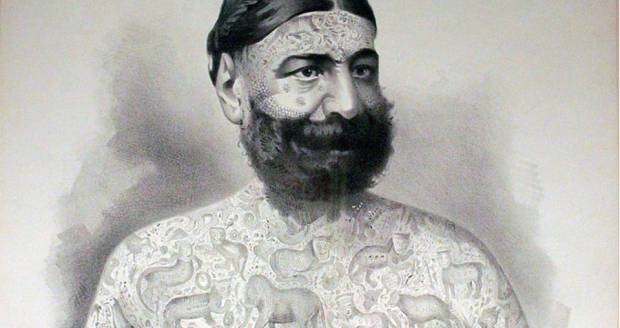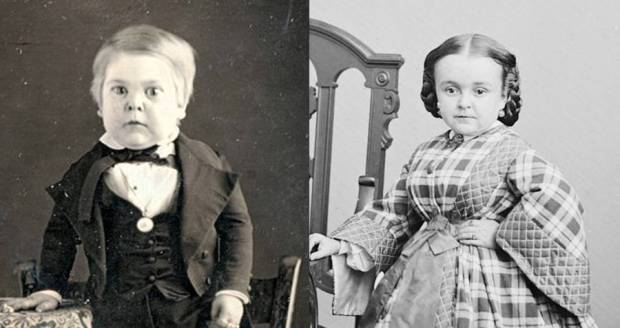
With the musical “the Greatest showman” starring Hugh Jackman,to hit the cinema soon and in some countries it already is in the movie theaters, it is time to have a look what that greatest show actually was.

Phineas Taylor Barnum (July 5, 1810 – April 7, 1891) was an American showman, politician, and businessman remembered for promoting celebrated hoaxes and for founding the Barnum & Bailey Circus (1871-2017). Although Barnum was also an author, publisher, philanthropist, and for some time a politician, he said of himself, “I am a showman by profession…and all the gilding shall make nothing else of me,”[2] and his personal aim was “to put money in his own coffers.” Barnum is widely, but erroneously, credited with coining the phrase “There’s a sucker born every minute”
When he was 25, he entered the world of showbusiness, starting with a small sideshow. Though most people associate him with the famous Barnum and Bailey circus, he had an almost 40-year career in sideshows before entering the big top.
In 1841, years before the “Greatest Show on Earth,” Barnum purchased a rundown museum in downtown Manhattan and opened Barnum’s American Museum. In the museum, he displayed a variety of “oddities,” which included historical artifacts, foreign curiosities, animals, and human beings, totaling 500,000 displays in all. The museum was also home to America’s first aquarium and wax-figure.
The museum burned down in 1865, the result of a furnace fire in the basement.

No humans were harmed, though almost all of the museums’ animals died, and the two beluga whales in the aquarium horrifically boiled alive in their tanks.
Not easily deterred, Barnum rebuilt the museum and promised to fully stock it again. However, before he could, another fire destroyed it again three years later.
At this point, Barnum joined up with James Bailey, and together they formed “Barnum and Bailey’s Greatest Show on Earth.” Taking with them the collection of human oddities leftover from the museum, as well as a new trove of animals, Barnum and Bailey traveled the world in the first big top three ring circus.
Below are just some of those human ‘oddities’
The Four Legged Woman

Myrtle Corbin joined Barnum’s sideshow at 13 years old. She was born with dipygus, a medical condition which resulted in Myrtle being born with two pelvises, and four legs. She performed until she was 19 years old, at which point other sideshow members tried to falsify her condition. None of the attempts at a faux four-legged woman were as popular as Myrtle herself. Circa 1880s.
The Greek Albanian

George Costentenus was one of Barnum’s oddities who was odd simply for the fact that he was foreign. Originally from Albania, Costentenus was covered from head to toe in tattoos. He claimed to be a descendant of a noble Greek man, who had been kidnapped by Chinese Tartars and tattooed against his will. In reality, they were probably done for show.
Jo-Jo The Dog-Faced Boy

Fedor Jeftichew signed his contract with Barnum when he was 16 years old. He was born with hypertrichosis, which resulted in his face being almost fully covered in hair. Barnum created a false backstory for him that involved a hunter who tracked and captured him. He claimed that he was an uncivilized savage, and to add to the illusion Fedor would regularly bark and growl like a dog. Circa 1880s
Chang and Eng Bunker

Chang and Eng Bunker were born outside of Bangkok, in what was then known as Siam. They are the origin of the term “Siamese Twins.” In 1829 the two men joined P.T. Barnum’s circus and were exhibited as an oddity. After they finished their tour, the pair relocated to North Carolina in America and married a pair of sisters. 1865
The Human Skeleton

Isaac Sprague performed with Barnum at his American Museum, as the “human skeleton.” At the age of 12, Isaac started losing weight despite his healthy appetite, and eventually went down to a weight of 43 pounds. He was often paired with Barnum’s overweight performers, to highlight each of their weights. 1867.
The Bearded Woman

Annie Jones Elliot toured with Barnum during his circus days. By the age of five, she had a full beard, mustache, and sideburns. She was believed to suffer from hirsutism, a condition that causes excessive body hair growth. Circa 1880s.
Tom Thumb And Lavinia Williams

Tom Thumb, born Charles Sherwood Stratton, became one of Barnum’s most famous oddities as soon as he joined. By the time he was six years old, he had reached his full height of two feet tall. His fame helped finance the museum’s multiple tours across Europe and brought Queen Victoria to the audience twice. Eventually, he settled down with Barnum’s second “little person” Lavinia Williams. Cira 1860s.
I know in the movie ,P.T Barnum, is portrayed as a great man but I can’t help but feel that in a way he exploited these people.

Donation
I am passionate about my site and I know you all like reading my blogs. I have been doing this at no cost and will continue to do so. All I ask is for a voluntary donation of $2, however if you are not in a position to do so I can fully understand, maybe next time then. Thank you. To donate click on the credit/debit card icon of the card you will use. If you want to donate more then $2 just add a higher number in the box left from the PayPal link. Many thanks.
$2.00




















You must be logged in to post a comment.